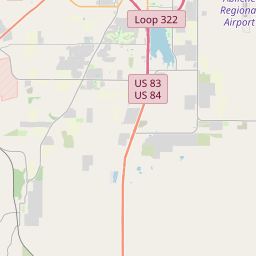Vicinity of Indian Fight
Historical marker location:






On August 29, 1863, Indian riders (probably Comanches) coming north from Mason County, with stolen horses, were caught a mile east of Buffalo Gap by Lt. T. C. Wright and eleven state troopers. The outnumbered soldiers were forced to attack up a steep hill and the Indians, determined to keep the herd, fought stubbornly. Wright and his men - two with severe arrow wounds - finally gave up the unequal fight and the Indians escaped with the horses. A lone rider was sent under cover of night to Camp Colorado (45 miles southeast) to bring an ambulance for the wounded. (1968)
As one of the most visible programs of the Texas Historical Commission (THC), historical markers commemorate diverse topics in Texas history, including: the history and architecture of houses, commercial and public buildings, religious congregations, and military sites; events that changed the course of local and state history; and individuals who have made lasting contributions to the state, community organizations, and businesses.
Texas was once a part of Mexico but gained independence in 1836 after a famous battle at the Alamo.
The early years of Taylor County were characterized by the hardships and challenges faced by the settlers. The area was sparsely populated, and conflicts with Native American tribes were common. However, with the development of the Texas and Pacific Railway in the late 19th century, Taylor County experienced a significant period of growth and development. The railroad sparked economic growth, attracting new settlers and industries to the area.
Agriculture played a vital role in Taylor County's history, with cotton being the dominant crop. The fertile soil and favorable climate allowed farmers to thrive, and cotton production became a major industry in the county. However, the agricultural boom was affected by various factors, including natural disasters and economic fluctuations, leading to both prosperity and challenges for the region's farmers.
Over the years, Taylor County has continued to evolve and diversify its economy. The discovery of oil in the early 20th century led to the establishment of the petroleum industry in the county, bringing new opportunities for growth and development. Today, Taylor County is a thriving community with a diverse economy that includes agriculture, oil and gas, manufacturing, education, and healthcare. The county's rich history is celebrated through its numerous historical sites and museums, providing a glimpse into the past while embracing the progress and future of the region.
Taylor County Timeline
This timeline provides a glimpse into the major events and milestones that have shaped the history of Taylor County, Texas.
- 1858 - Taylor County is officially formed and organized.
- 1878 - Abilene becomes the county seat of Taylor County.
- 1881 - The Texas and Pacific Railway is completed, increasing transportation and trade in Taylor County.
- 1890 - Taylor County population reaches over 8,000 residents.
- 1909 - Abilene Christian College (now Abilene Christian University) is established.
- 1924 - Construction of the Lake Abilene dam begins.
- 1930s - The Great Depression severely impacts Taylor County, causing economic hardship.
- 1950 - Dyess Air Force Base is established, bringing economic growth to the county.
- 1969 - Abilene becomes the first city in Texas to implement the "911" emergency telephone system.
- 1999 - The Taylor County Expo Center opens, becoming a hub for events and exhibitions.
- 2006 - The Abilene Zoo completes a major renovation, enhancing its facilities and exhibits.